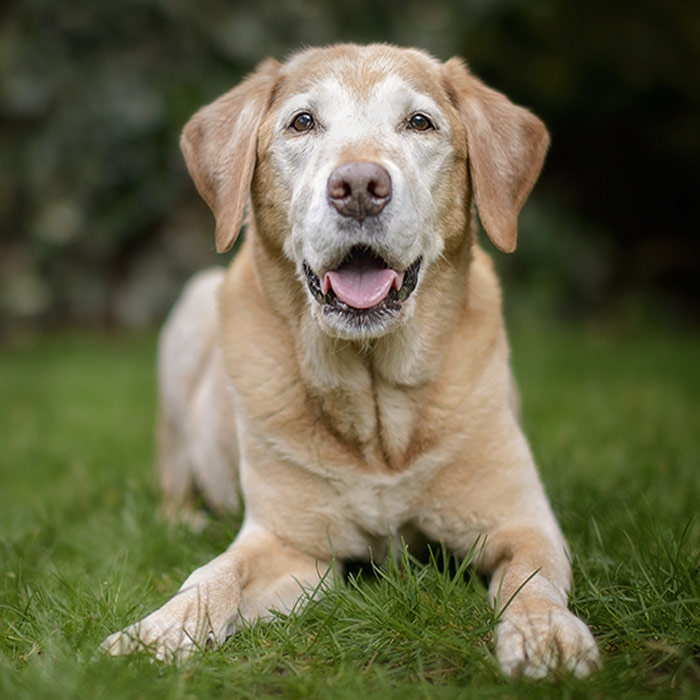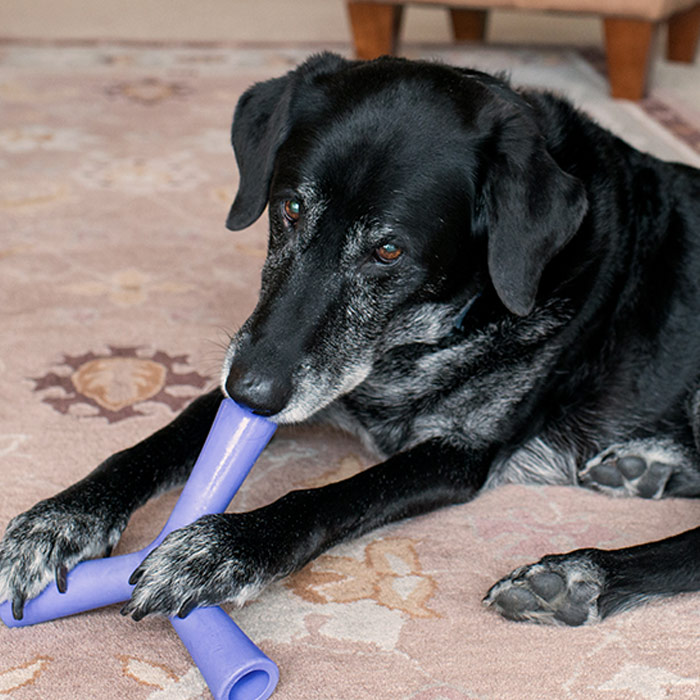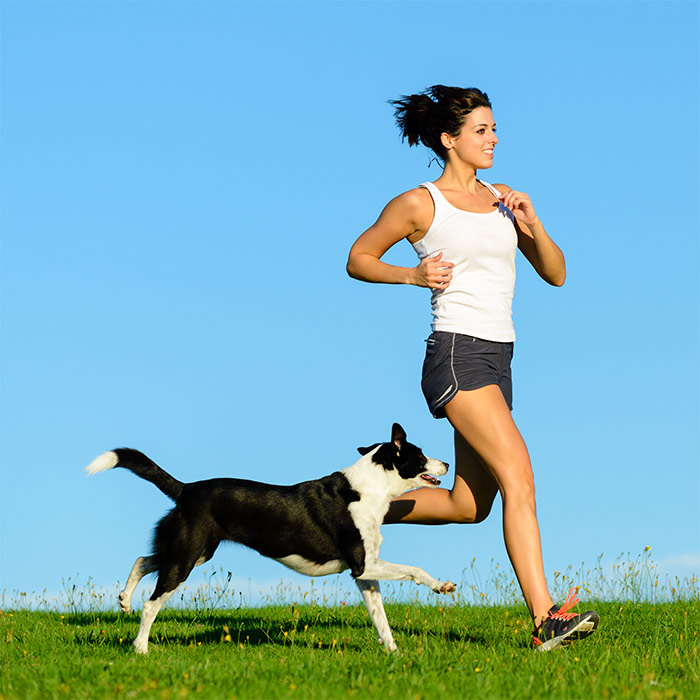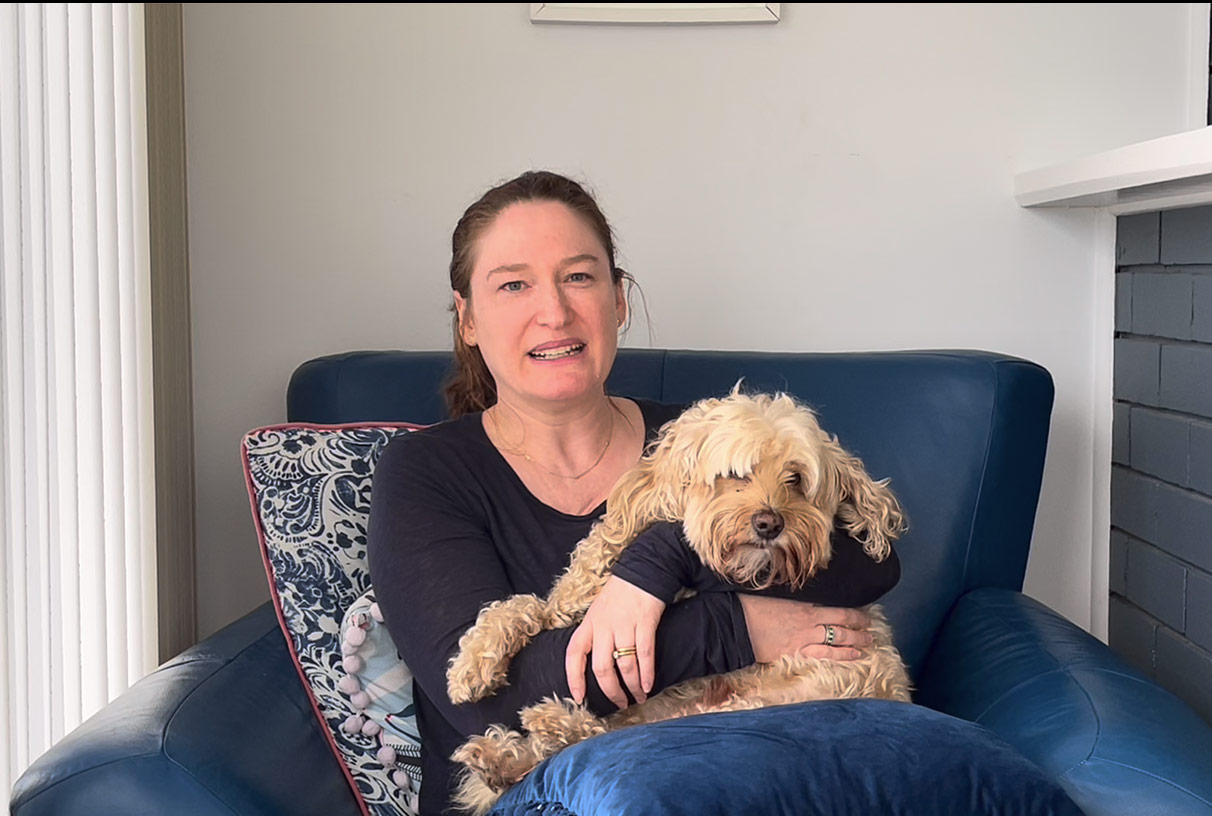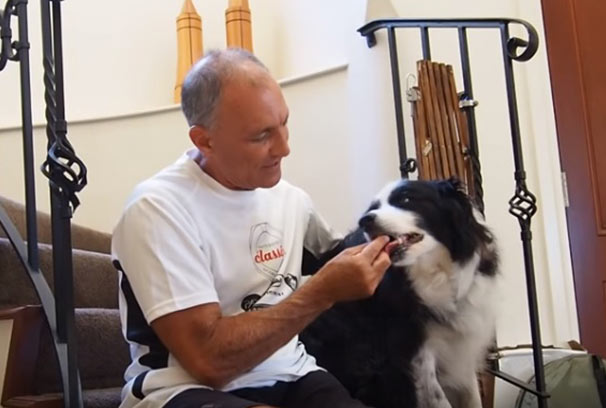Exercising your senior dog
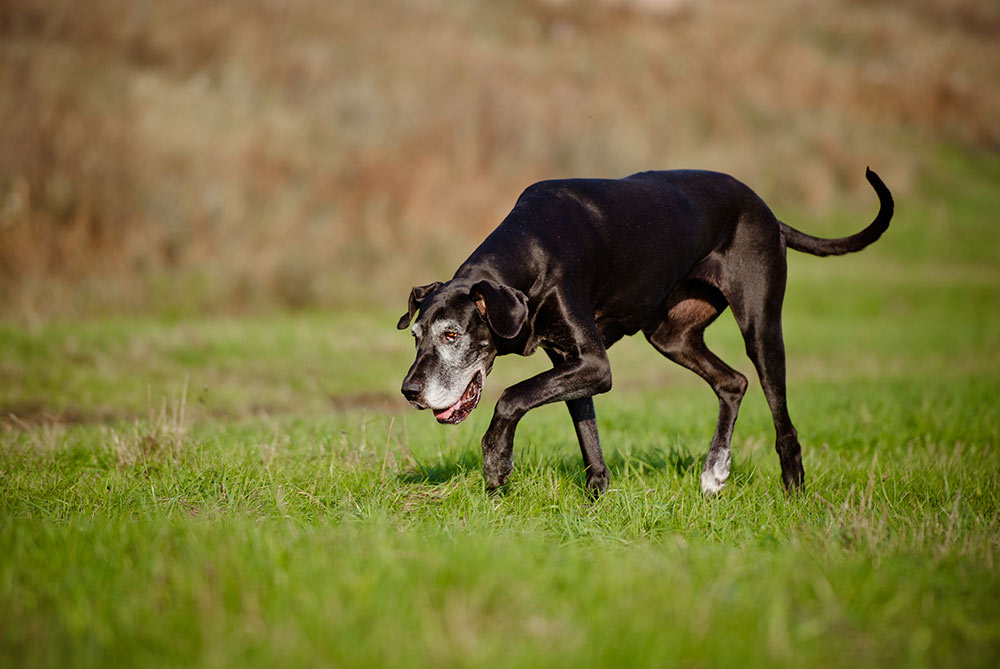
Although she might not be moving as fast or as far as she used to, your senior dog can still partake in many safe and beneficial forms of exercise, whether going for walks, playing games, visiting the dog park or swimming. At this age, sore joints and muscles can make it difficult for her to get moving, so patience is essential. So too is moderation – if you overdo her exercise, it can exacerbate her issues rather than alleviate them.
Regardless of any physical limitations your dog may have, there are still some enjoyable activities that she can do which will help maintain her optimal well-being. For example, if she suffers from a condition such as osteoarthritis, hip dysplasia or a joint injury, she will benefit from an activity that will ease the stress on the affected joints and strengthen the muscles that support them.
Before taking up any new form of exercise, or ramping up her current activities, make sure she has a check-up with her veterinarian. The vet can make sure that she is physically capable of performing the activity, look for signs of potential problems, and give you advice on the best ways to ensure her ongoing fitness.
You can use our dog age calculator to find out your dog’s life stage, which can help you make smarter choices about their food, exercise, and health care.
Walking
Just about every dog enjoys going for a walk, regardless of age. Walking is an effective, low-impact exercise that is one of the best medicines for combatting the physical and mental effects of aging. However, consistency is key when it comes to walking your senior dog – a daily or twice-daily walk of fifteen to thirty minutes is far more beneficial than a lengthy hike once a week.
A s your dog ages, pay attention to her walking pace, the weather conditions, and how she appears to feel during and after the walk. Senior dogs are more sensitive to the heat and the cold, so try to avoid exercising in the coldest and hottest times of the day to make sure she is comfortable. Also, be aware that the surface you walk on can affect her walking ability. Grass and sand are recommended, while bitumen and gravel should be avoided where possible, especially in warmer temperatures, where a hot surface could burn her paw pads.
s your dog ages, pay attention to her walking pace, the weather conditions, and how she appears to feel during and after the walk. Senior dogs are more sensitive to the heat and the cold, so try to avoid exercising in the coldest and hottest times of the day to make sure she is comfortable. Also, be aware that the surface you walk on can affect her walking ability. Grass and sand are recommended, while bitumen and gravel should be avoided where possible, especially in warmer temperatures, where a hot surface could burn her paw pads.
Adding variety into your walk by changing up the route, going up and down hills, mixing up the terrain, or even incorporating short stretches of fast walking or slow jogging, health permitting, can be extremely beneficial for your senior dog. However, if you notice that she is usually stiff or in pain after a walk, discuss with your vet whether you need to reduce the pace and/or the distance, or alternate walking with another suitable form of exercise (see Cross-training below).
Swimming
If you live near a dog-friendly pool, beach or lake, swimming is a great way for your senior dog to exercise (for small breeds, a kiddie pool in the backyard may even do the trick). Swimming is very easy on the body, especially the joints, while providing an effective workout, building up endurance and muscle strength. Therefore, it is an excellent form of exercise for dogs who struggle to walk because of joint issues or physical disabilities. In fact, swimming is often used as physical therapy for dogs of all ages after undergoing major surgery.
If your dog is new to swimming, check with your vet before ‘diving in’, to make sure it’s a safe form of exercise for her. Certain breeds, like Bulldogs, aren’t designed to swim and may just sink. Also, dogs with certain medical conditions, such as open wounds or skin infections, may need to avoid the water. Not all dogs are natural swimmers, and some really do not like water, if she hasn’t swum before, you’ll need to introduce her to swimming slowly and safely to avoid mishaps.
Remember that no dog should swim without a human close by and observing her at all times. Also, it’s a good idea to have your dog wear a life vest or flotation device, especially in deep water or if she isn’t an advanced swimmer. If using a swimming pool, make sure there are stairs or another easy way for her to get out, to prevent possible drowning. If you have a local dog beach but your dog isn’t keen on swimming in the sea, remember that walking and playing in the shallows and on the sand are also great forms of exercise.
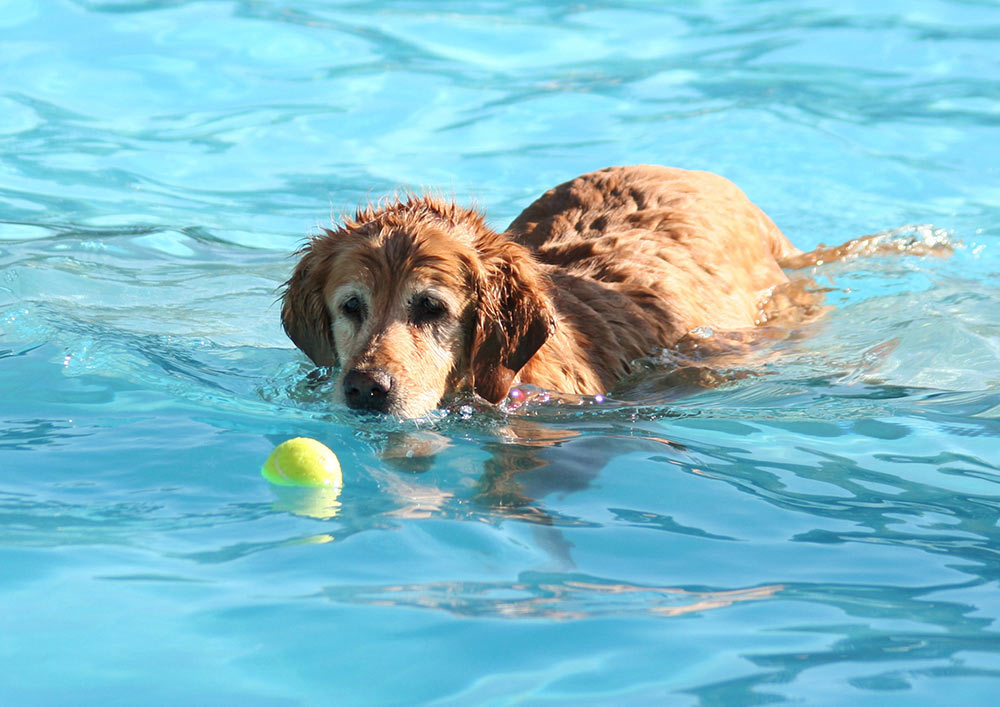
Hydrotherapy
 Hydrotherapy refers to the therapeutic use of water to aid or improve health. Canine hydrotherapy usually comprises swimming or walking on an underwater treadmill. Water provides buoyancy and resistance, making it possible to strengthen and condition muscles and build endurance without placing stress on the joints. Because of the low-impact nature of hydrotherapy exercise, it can usually be performed safely by dogs of all ages, including seniors with arthritis and muscle atrophy or wasting.
Hydrotherapy refers to the therapeutic use of water to aid or improve health. Canine hydrotherapy usually comprises swimming or walking on an underwater treadmill. Water provides buoyancy and resistance, making it possible to strengthen and condition muscles and build endurance without placing stress on the joints. Because of the low-impact nature of hydrotherapy exercise, it can usually be performed safely by dogs of all ages, including seniors with arthritis and muscle atrophy or wasting.
For dogs, hydrotherapy an help treat a wide range of injuries and health conditions. It can be used as part of a very specific, structured rehabilitation program with the goal of easing arthritis discomfort or improving function after injury or surgery. It can also be utilised as an ongoing form of exercise for senior dogs, as well as for optimised conditioning of canine athletes. To partake in a structured hydrotherapy program, you will need to contact a canine rehabilitation centre in your area.
Cross-Training
Cross-training is the use of several modes of exercise to maintain or improve physical fitness. At its most basic, it is simply varying the types of exercise your dog does in order to work certain muscle groups, such as alternately walking and swimming. The advantage of cross-training is that it allows certain areas of the body to rest while you work on building strength or endurance in other areas, so your dog is less likely to suffer an injury. In contrast, doing just one form of exercise over and over can result in overuse of some muscles and underuse of others, causing an imbalance that may lead to an injury.
There are many new and interesting ways to cross-train your dog available these days. Yoga classes for dogs, dog Pilates, and other types of exercise classes are gaining popularity because they provide so many mental and physical benefits to dogs of all ages, and particularly for seniors. Even certain dog sports are suitable for older dogs, providing great exercise as well as lots of fun and mental stimulation. According to the AKA, many senior dogs – comprising more than a third of participants – continue to compete in sporting events such as agility, nosework (scent detection), obedience and diving dogs.
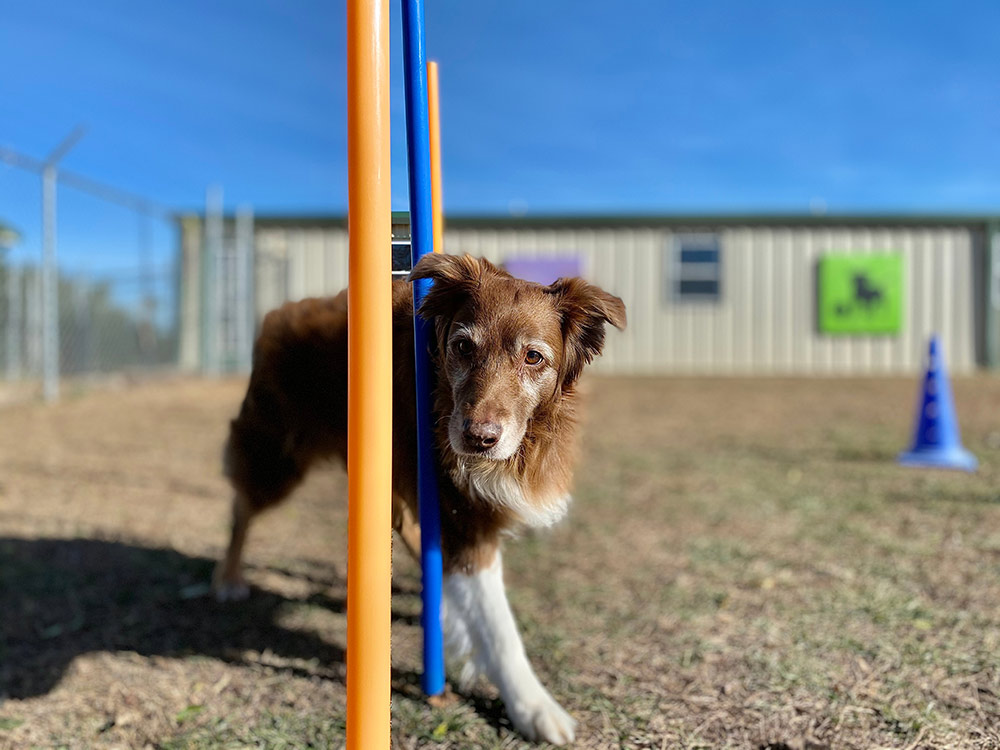
If attending classes and competitions isn’t your thing, there are also many strength and flexibility workouts — canine calisthenics, balance ball routines, stretching, stair climbing, weight pulls —that, if suitable for your dog, can be performed in the comfort of your home. Under your vet’s guidance, you can access websites or YouTube videos that provide instruction on specific exercises that address your dog’s areas of weakness and help to strengthen and condition the affected muscles or joints.
Learn more
- The importance of exercise for adult dogs
- How much exercise does my dog need?
- Indoor workouts for dogs
- Brain workout – Mental exercise for dogs
- Dog sports: fun activities for dogs & owners
Bow Wow Meow Pet Insurance can help protect you and your dog should an unexpected trip to the vet occur.
-
Find out more about our dog insurance options
-
Get an online pet insurance quote
Bow Wow Meow is proud to have been awarded winner of Canstar’s ‘Most Satisfied Customers’ Award in the Pet Insurance category for both 2024 and 2025!
Bow Wow Meow is proud to have been chosen as Product Review’s Pet Insurance Award Winner every year from 2018 to 2025! This is based on 2,995 independent customer reviews (as at 21/01/2025), with an overall rating of 4.3*
Google Review rating = 4.5* (based on 968 reviews)
Trust Pilot rating = 4.6* (based on 531 reviews)
Bow Wow Meow is proud to have been chosen as Product Review’s Pet Insurance Award Winner every year from 2018 to 2025! This is based on 2,995 independent customer reviews (as at 21/01/2025), with an overall rating of 4.3*
Google Review rating = 4.5* (based on 968 reviews)
Trust Pilot rating = 4.6* (based on 531 reviews)
Bow Wow Meow has been chosen as a winner in the Finder Pet Insurance Awards 2024. Finder’s panel of experts analysed over 140 quotes to award our Ultimate Care Plan the winner of the “Pet Insurance – Value” category.




